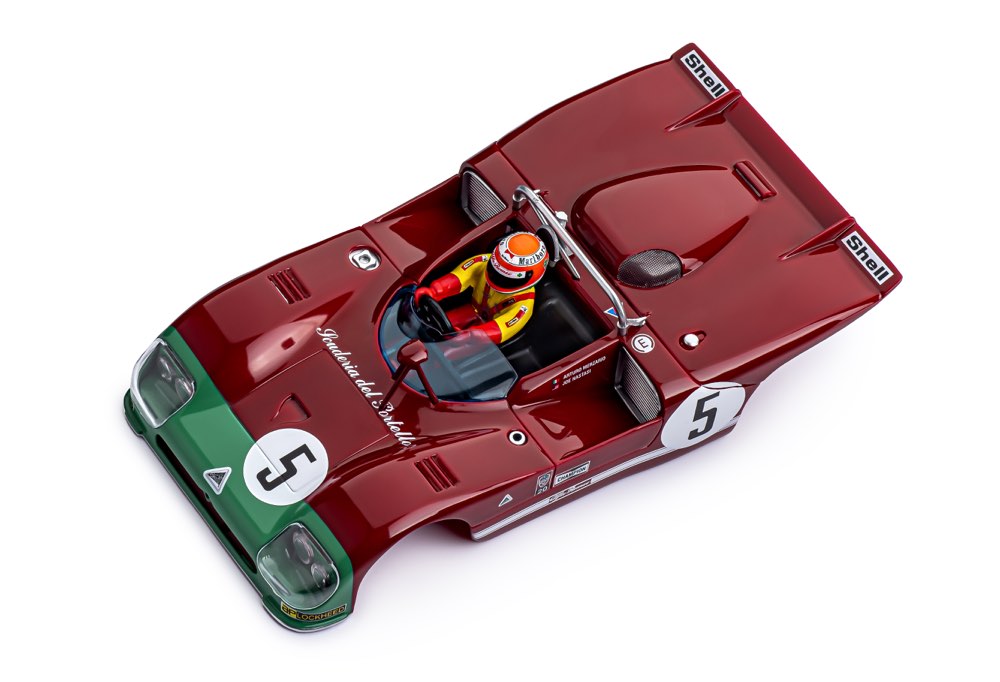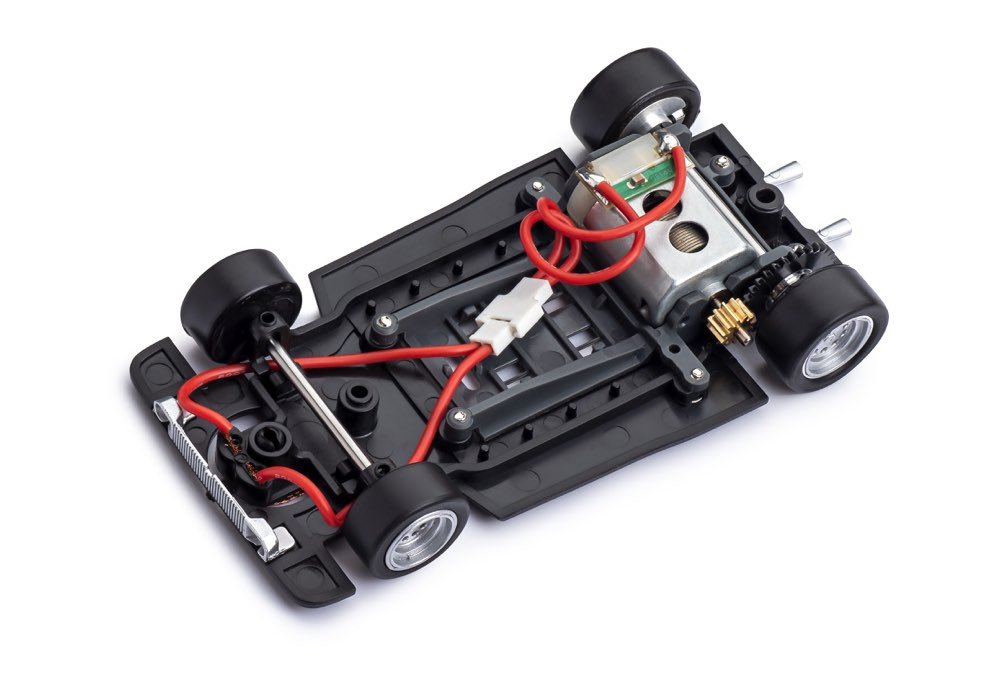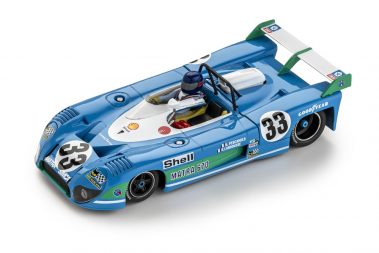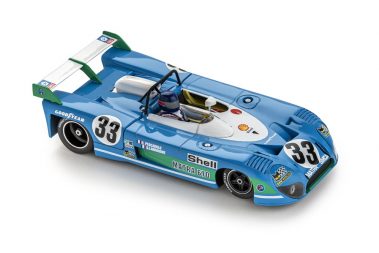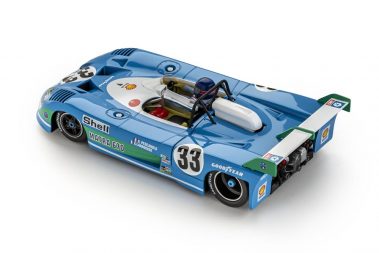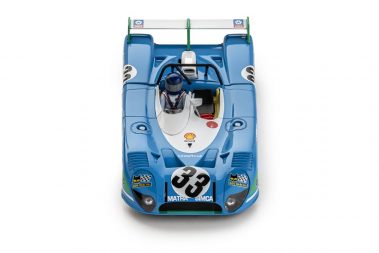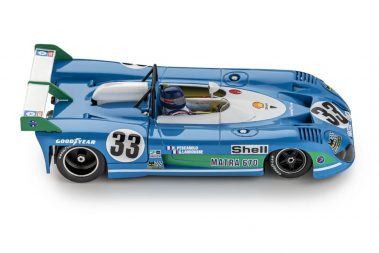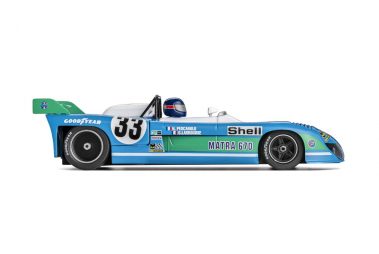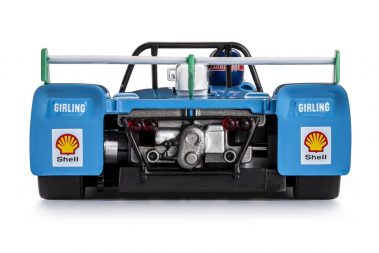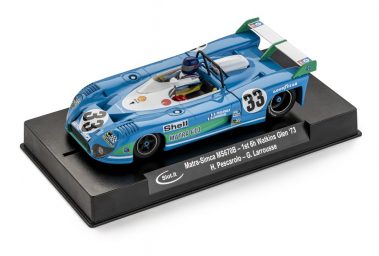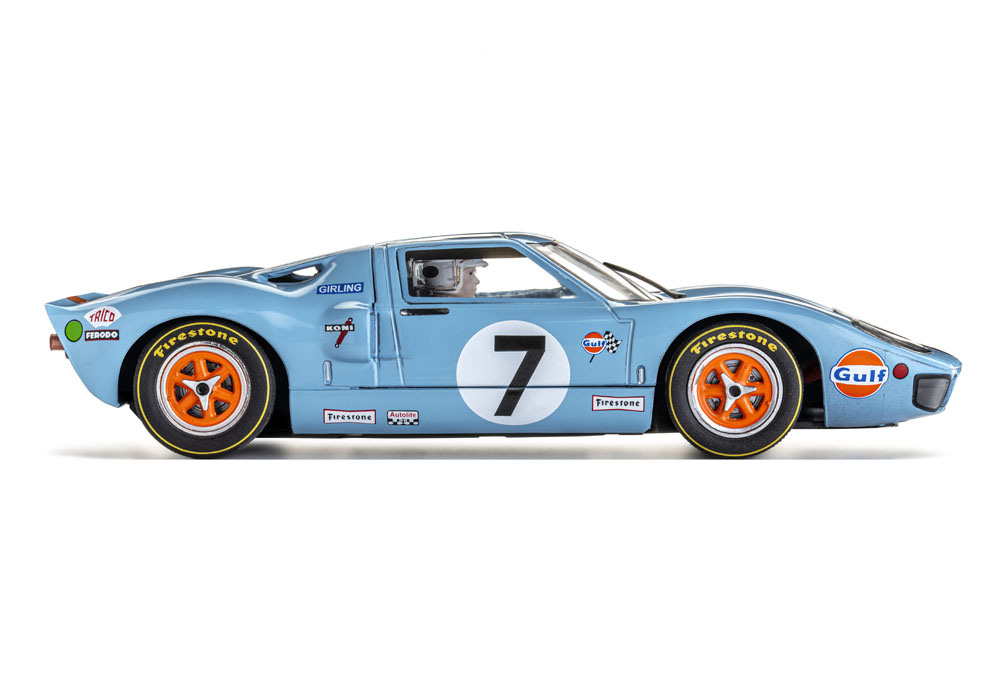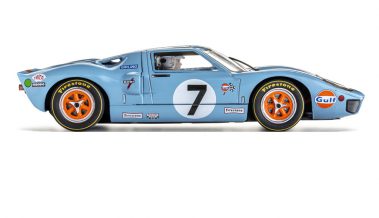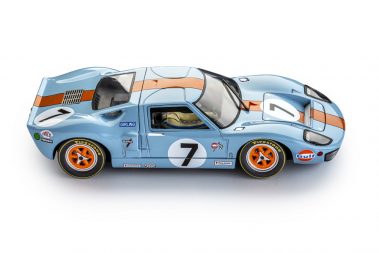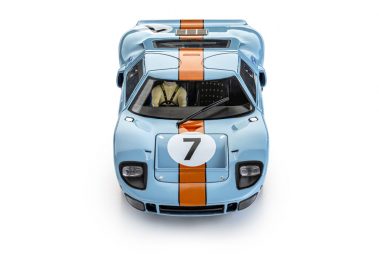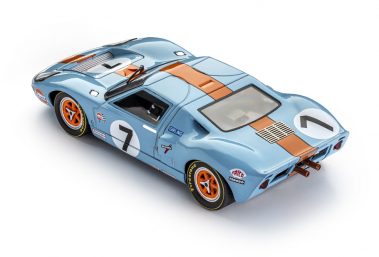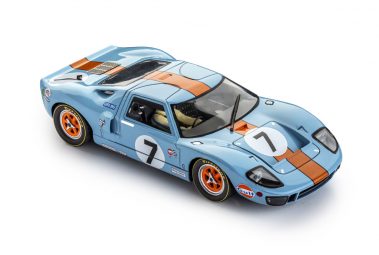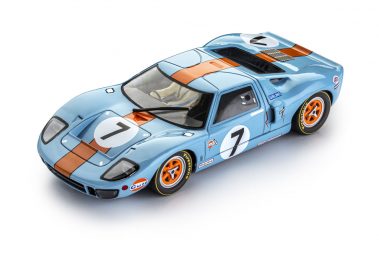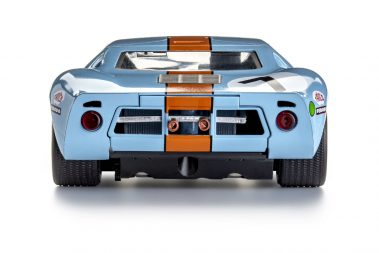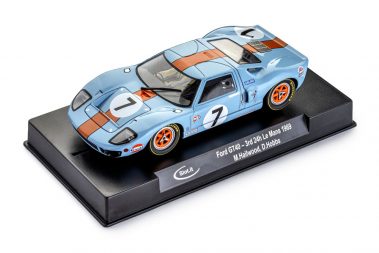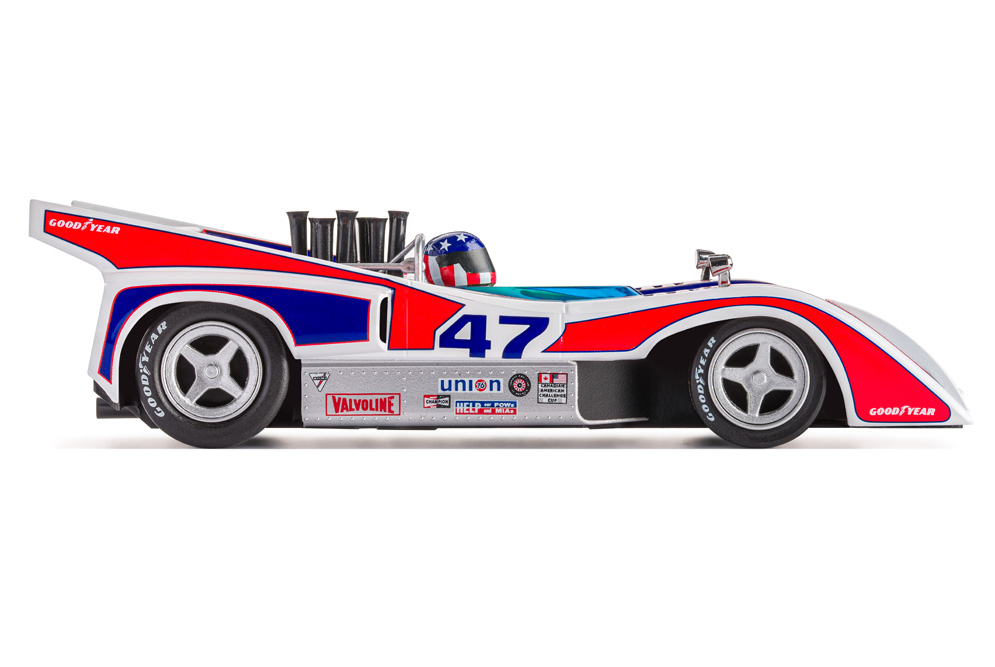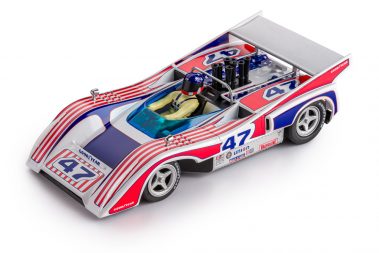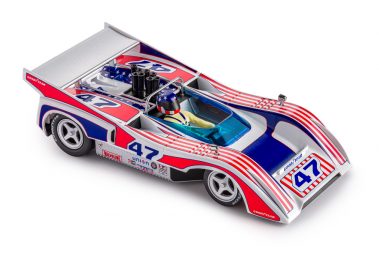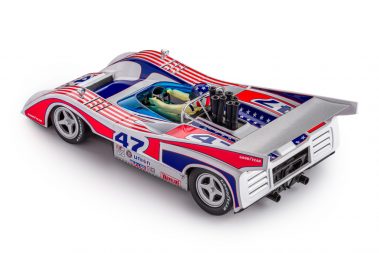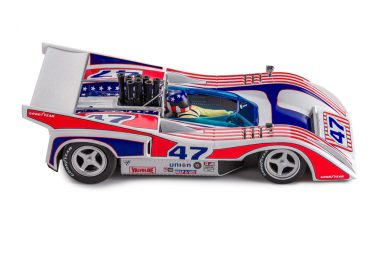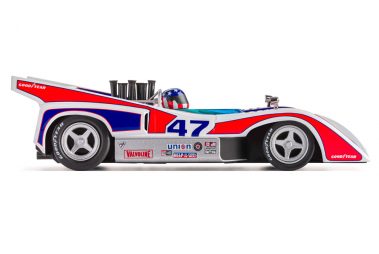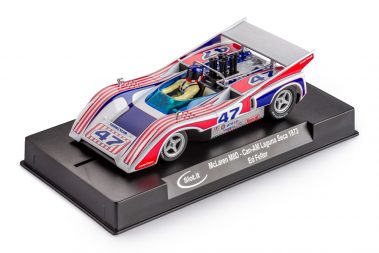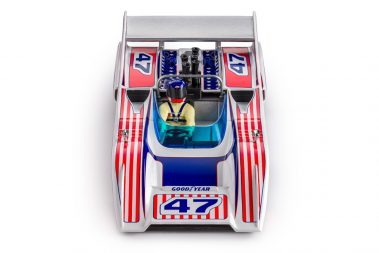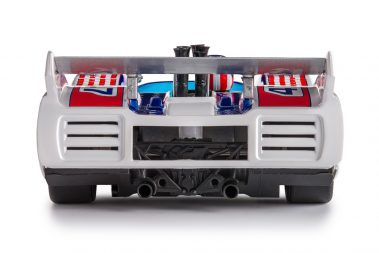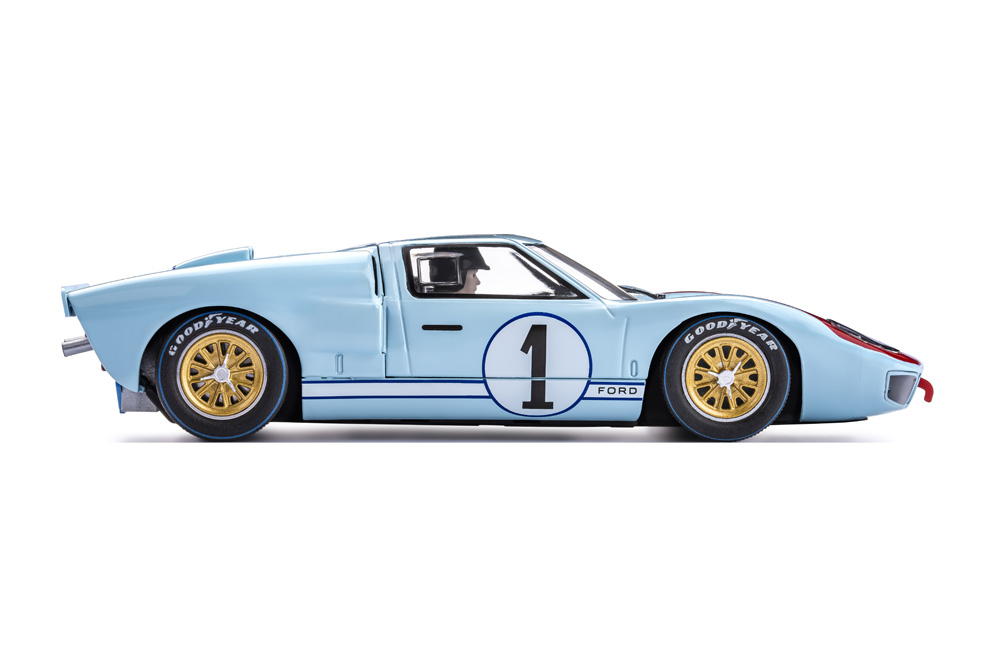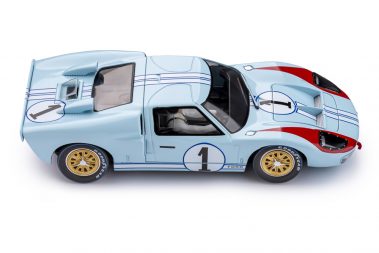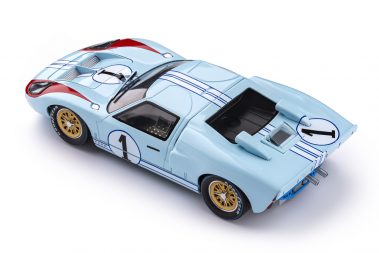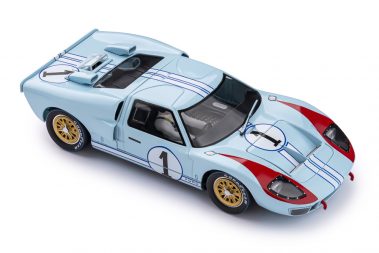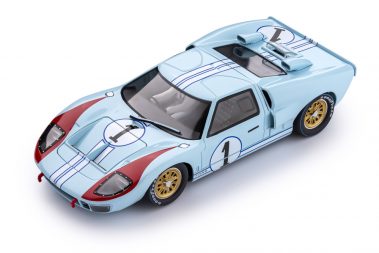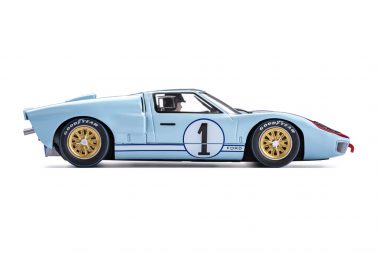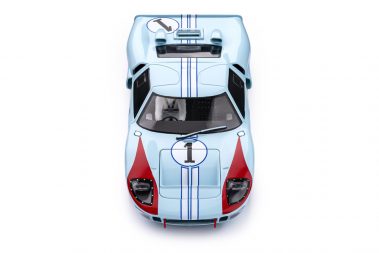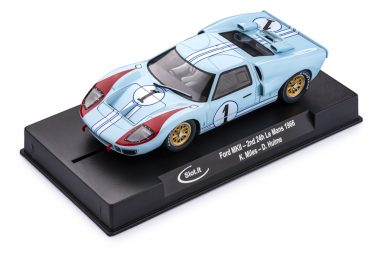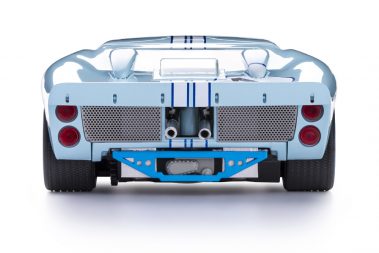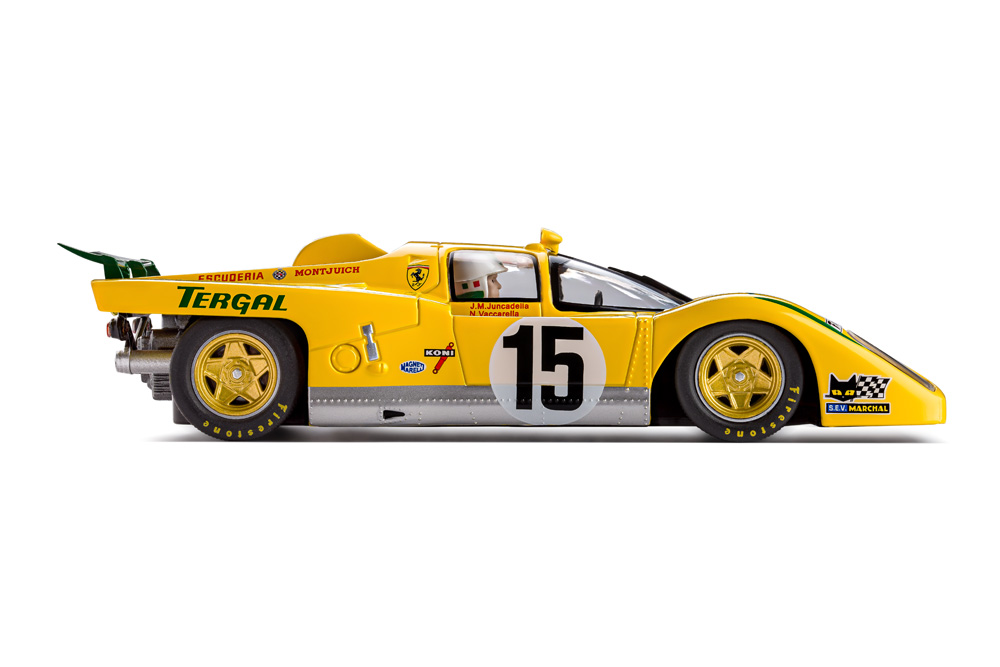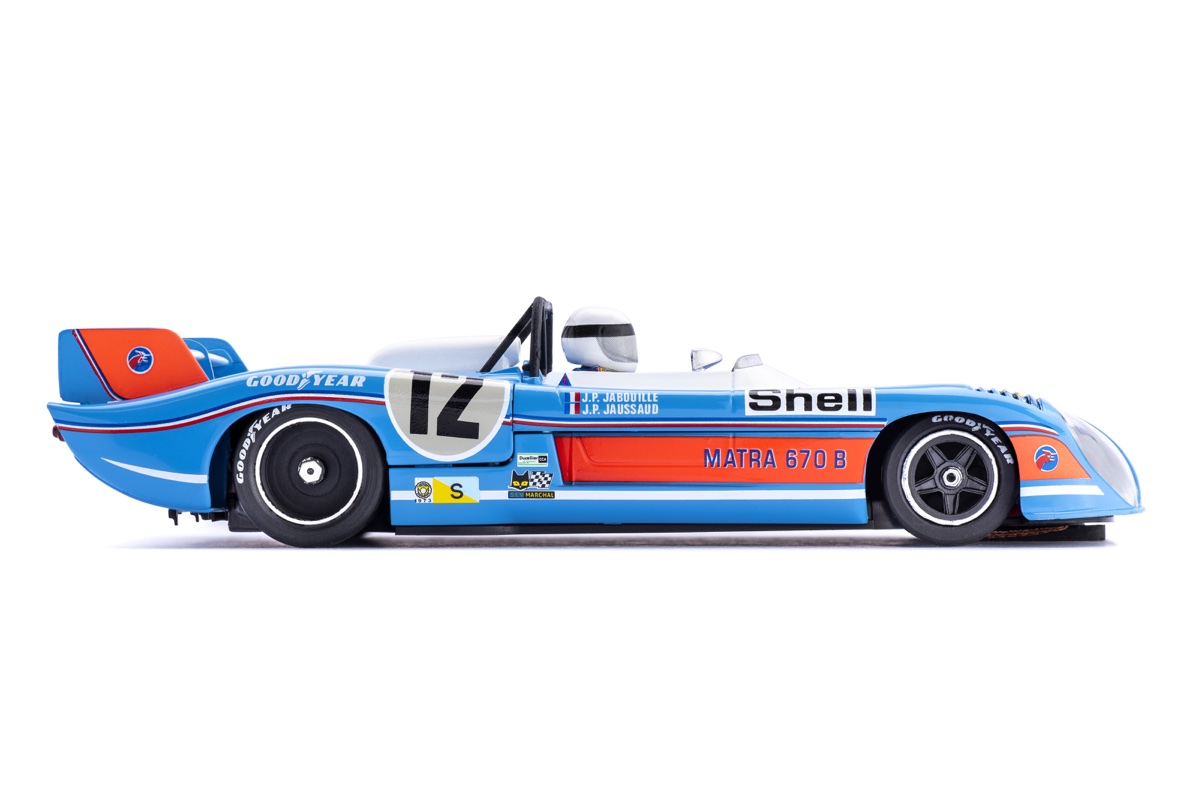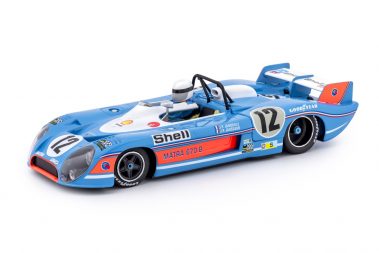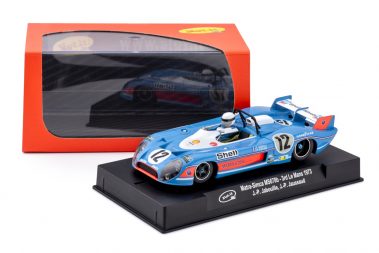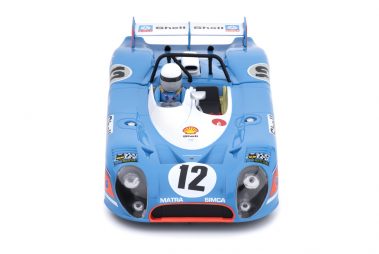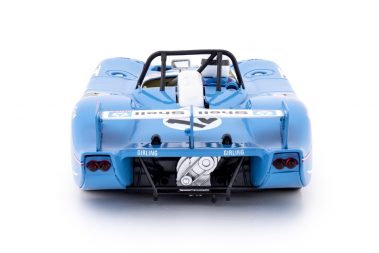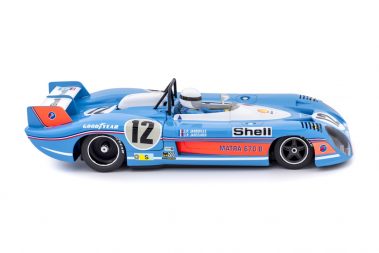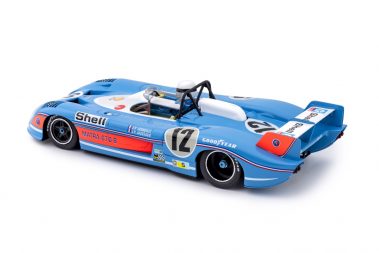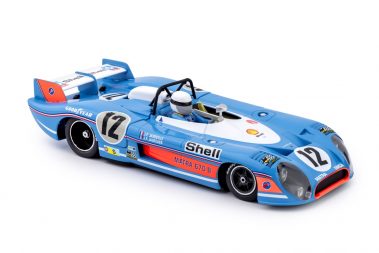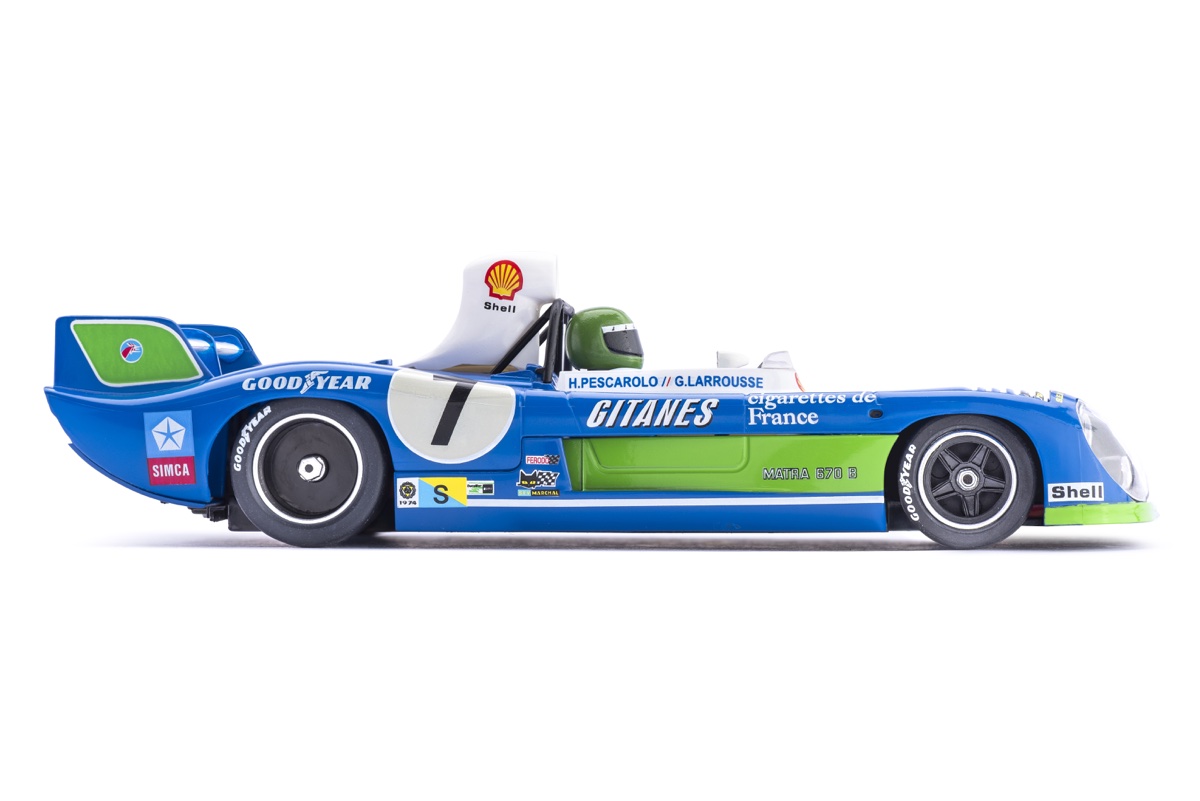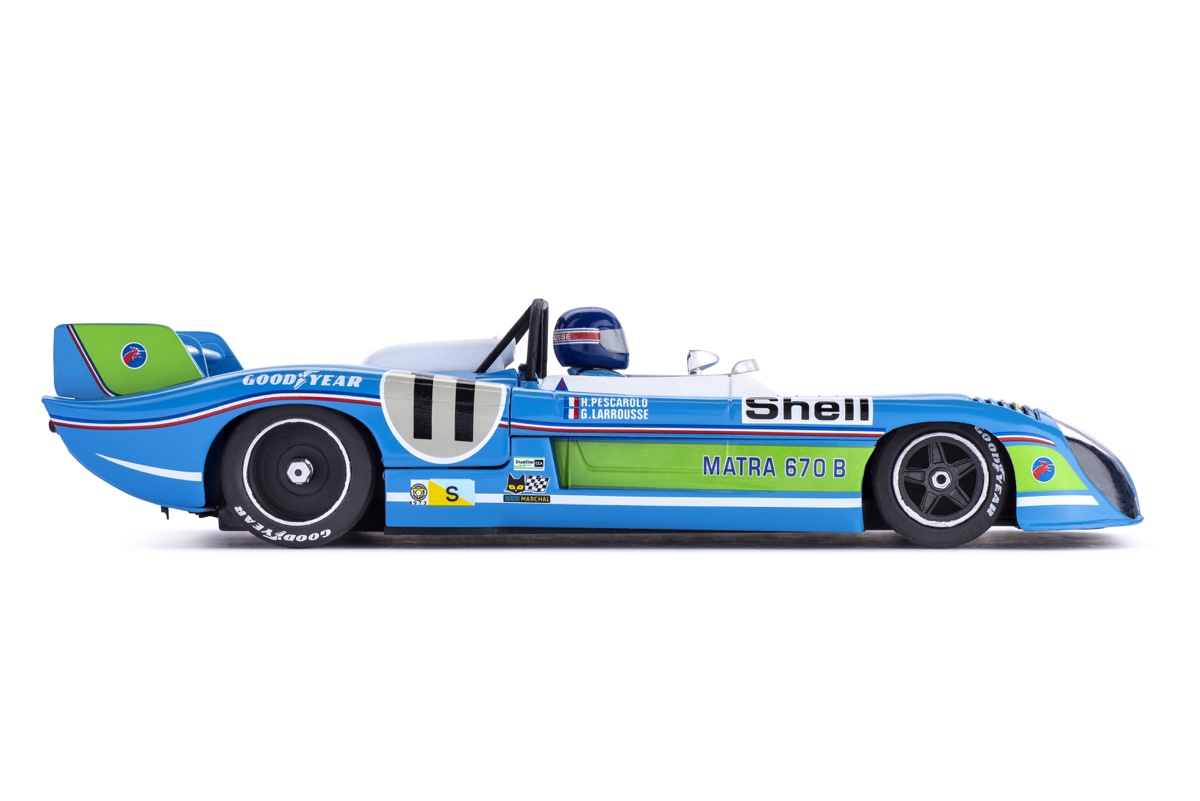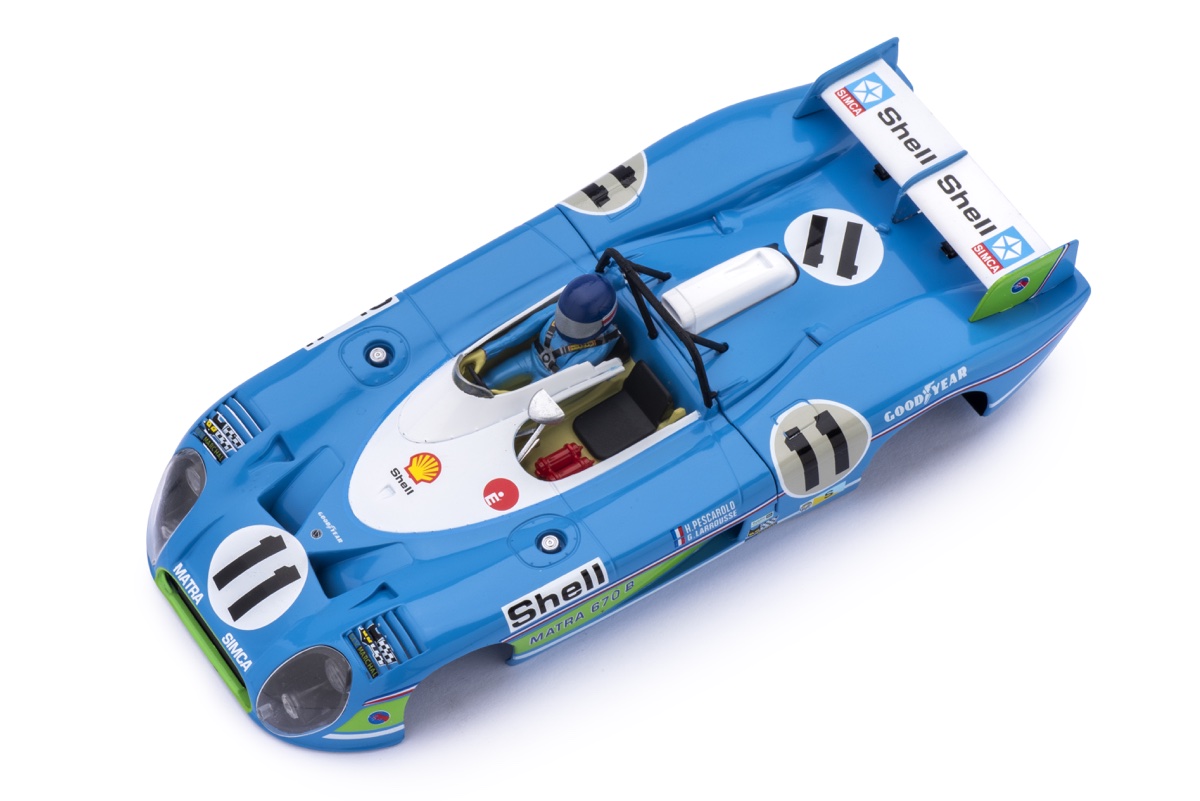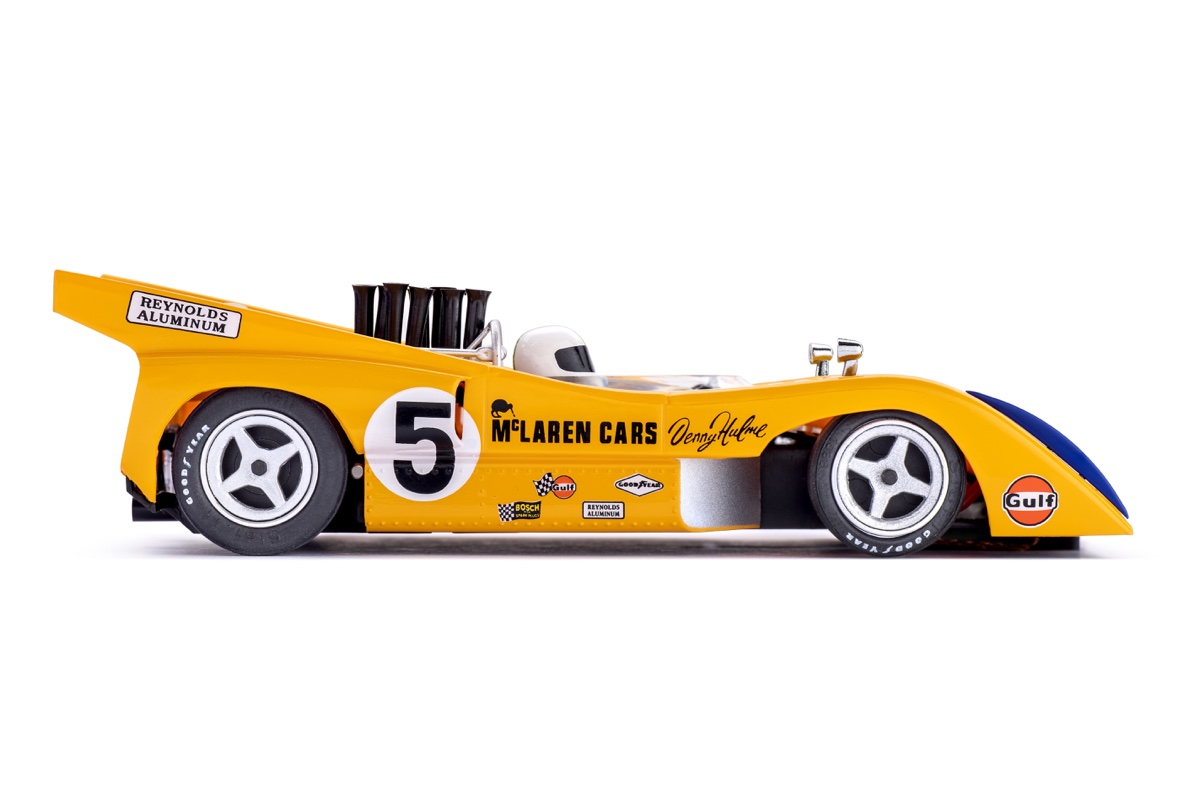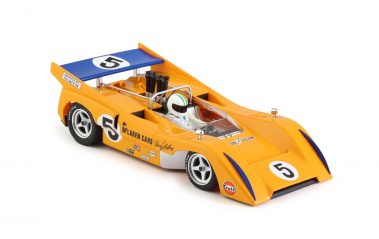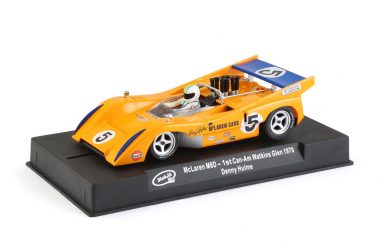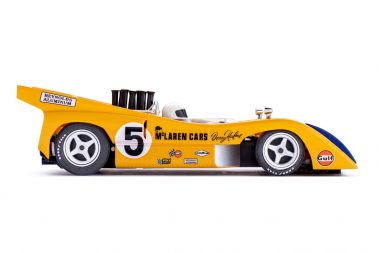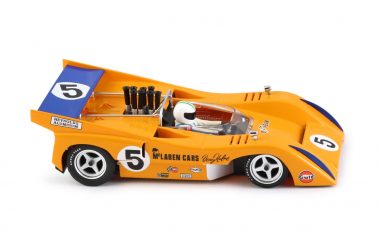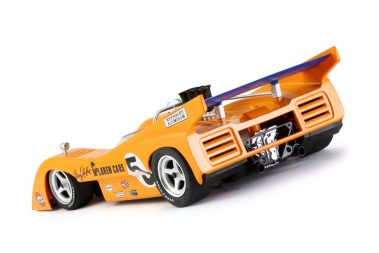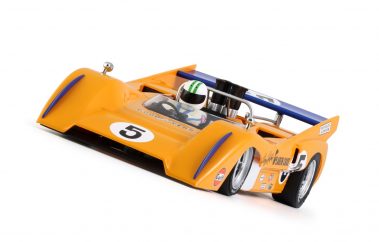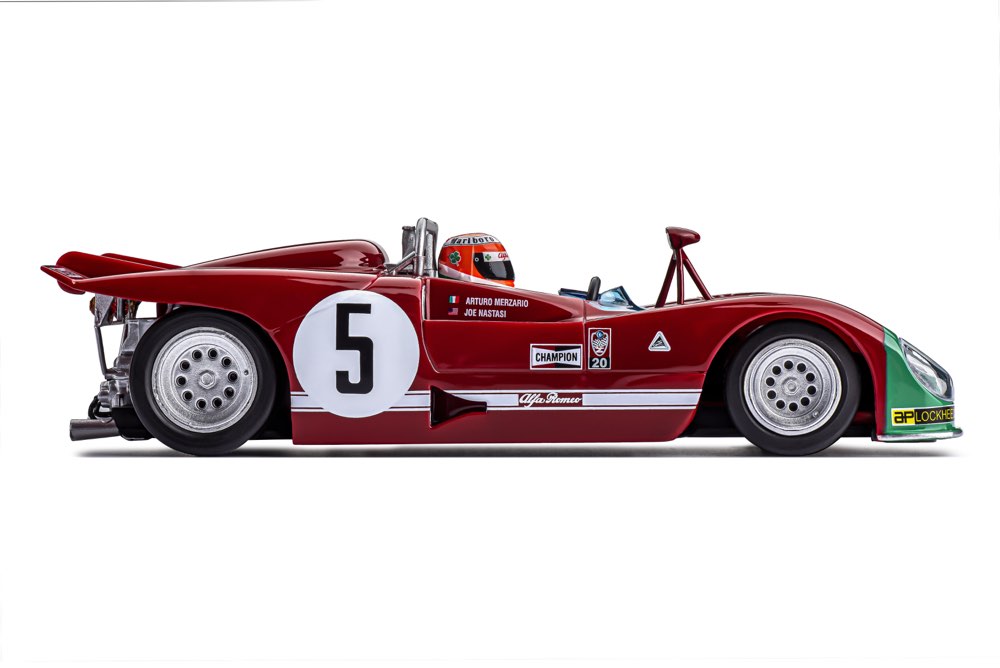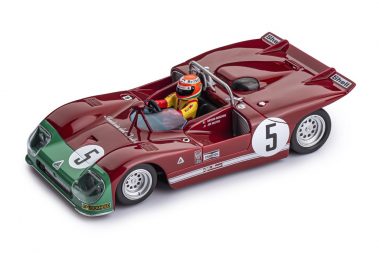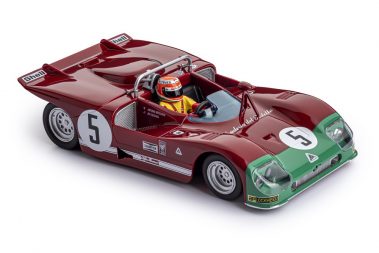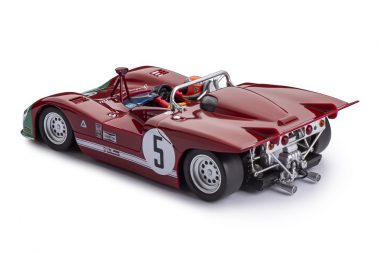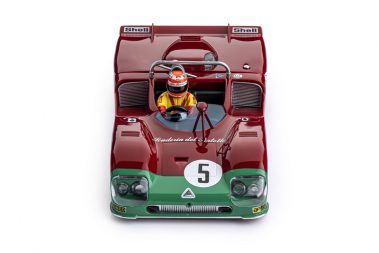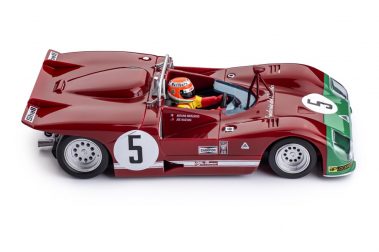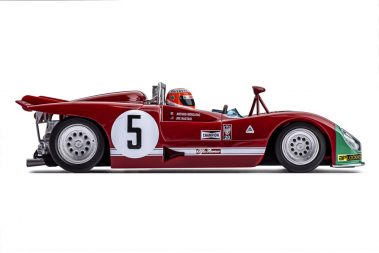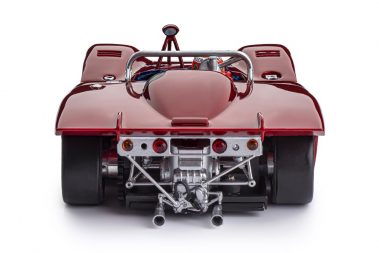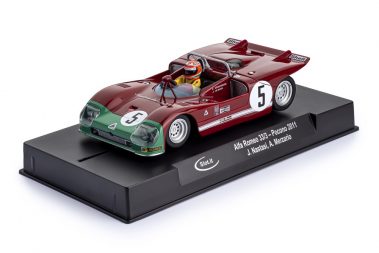FORD GT40
1969
FORD GT40
1969 - 24h Le Mans / #7 - M. Hailwood, D. Hobbs
CA18g


MCLAREN M8D
1973
MCLAREN M8D
1973 - Can-AM Laguna Seca / #47 - Ed Felter
CA26f
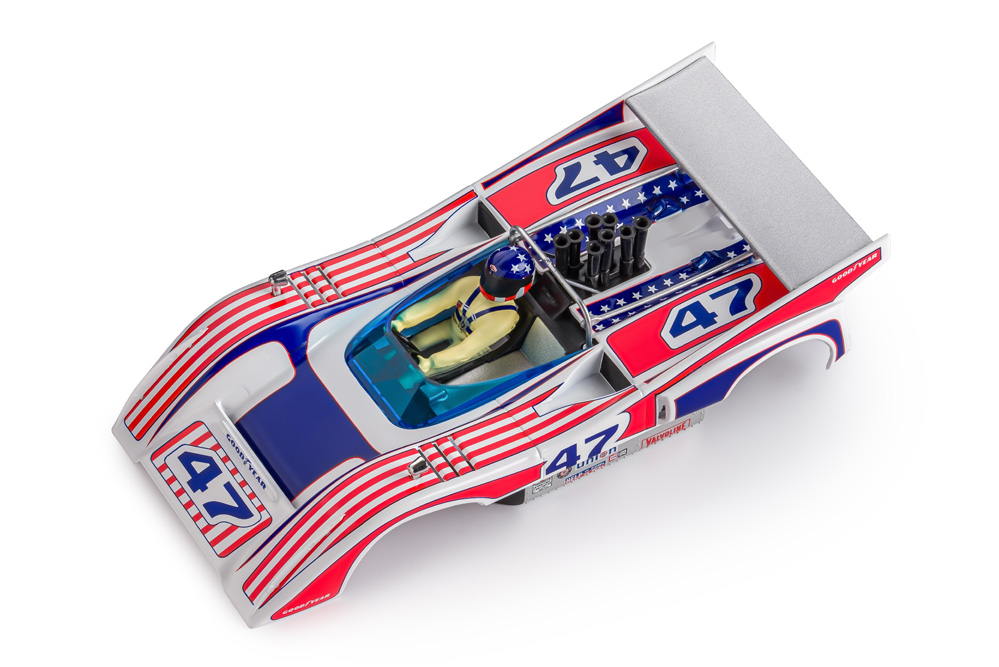
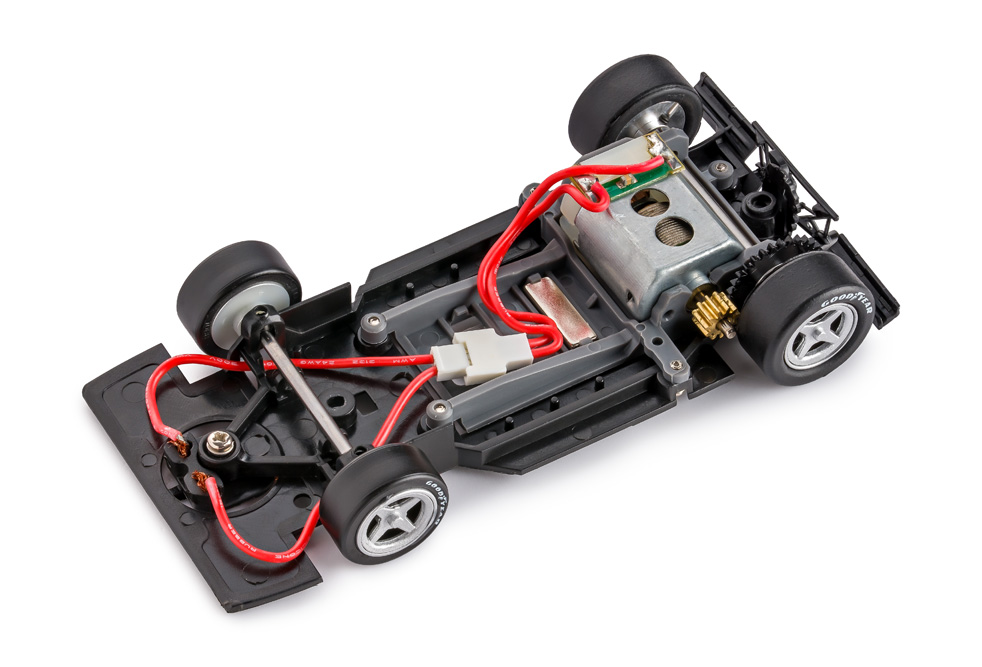
FORD MKII
1966
FORD MKII
1966 - 2rd Le Mans / #1 - K. Miles, D. Hulme
CA20d
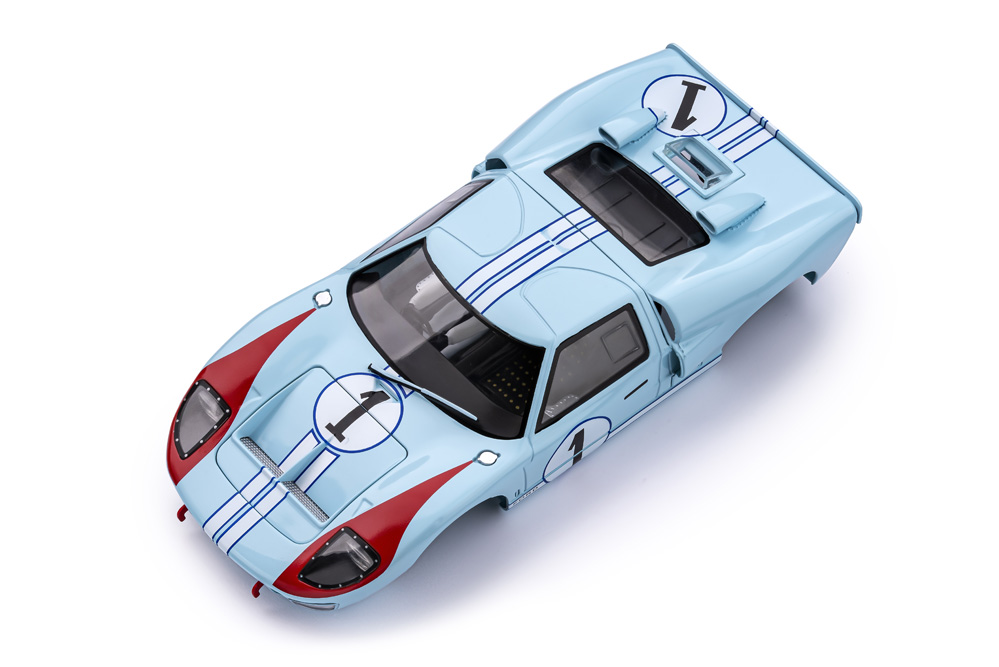
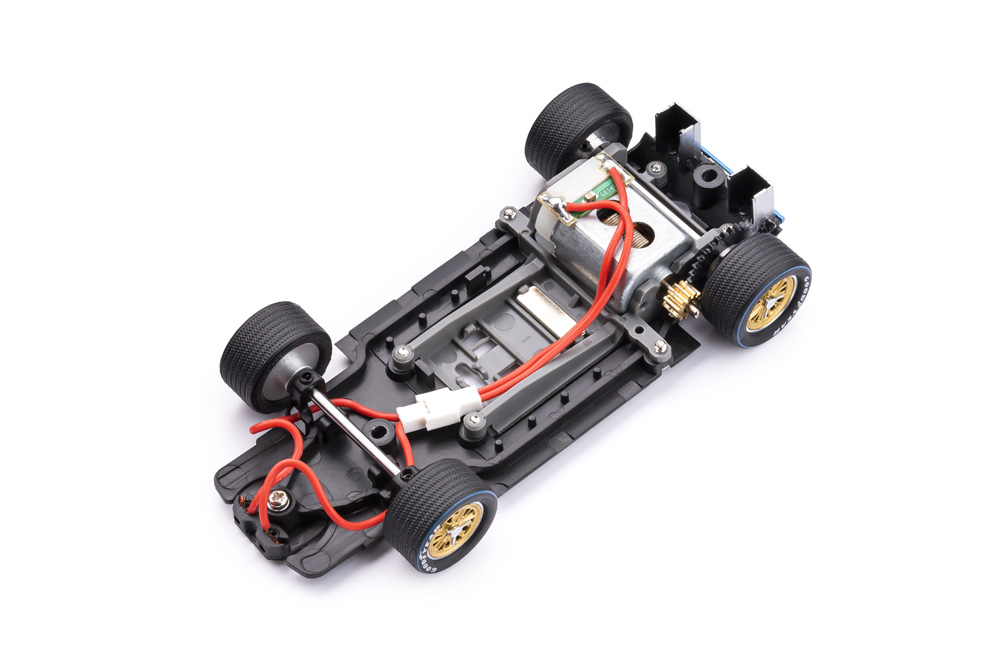
Ferrari 512M
1971
512M
1971 - Daytona #15 - N. Vaccarella, J. Juncadella
CA51c
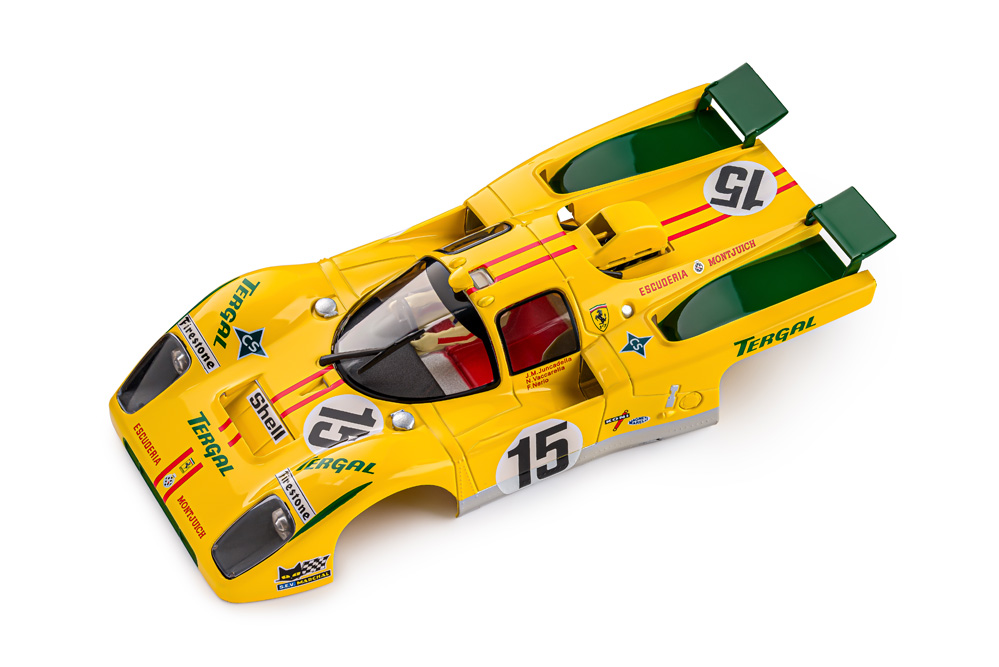
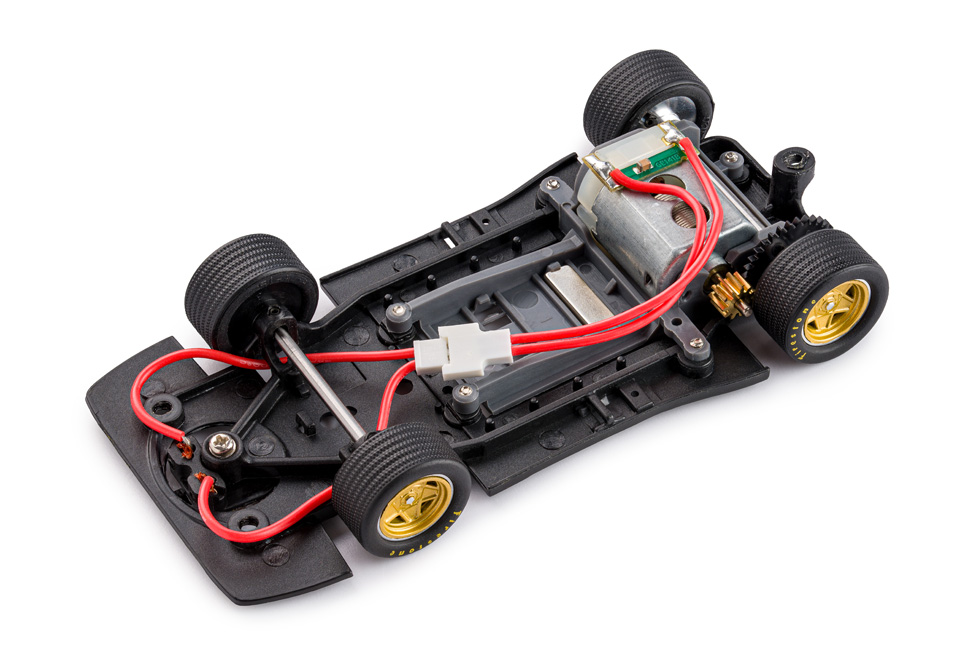
MATRA-SIMCA MS 670b
1973
MATRA-SIMCA MS 670B
1973 - 3rd Le Mans / #12 - J.P. Jabouille, J.P. Jaussaud
CA37b
The Matra-Simca MS 670 was a Prototype race car that won the Le Mans 24 Hours 3 times in a row (from 1972 to 1974) as well as the World Manufacturers Championship twice (1973 and 1974). It was designed by Bernard Boyer and Jean-Louis Cassin. A ‘B’ was added in 1973 to the ‘670’ name to indicate that a Porsche gearbox was used as opposed to the previously used ZF. The chassis was an Aluminium monocoque, coupled with a fibreglass body to reduce weight by 22 kg. It was powered by a 60°, 3-litres V12 engine, with aluminium block and head, whose bore and stroke were 79.7*50.0 mm. The Matra V12, named ‘MS 73’, was famous for its amazingly loud sound, and reached 480 CV at 10500 RPM with torque peaking at 320 Nm @ 8400 RPM. In Le Mans it raced with six-in-one exhausts, propelling the car to 320 km/h on the Mulsanne straight. Braking was guaranteed by outboard Girling ventilated discs, all-round. Rims dimensions were 13” x 11” at front and 13” x 17” at rear. The car weighted 693 kg. There were three MS670B racing in Le Mans in 1973, with No.12 driven by Jean-Pierre Jaussaud and Jean-Pierre Jabouille. They finished in third position.
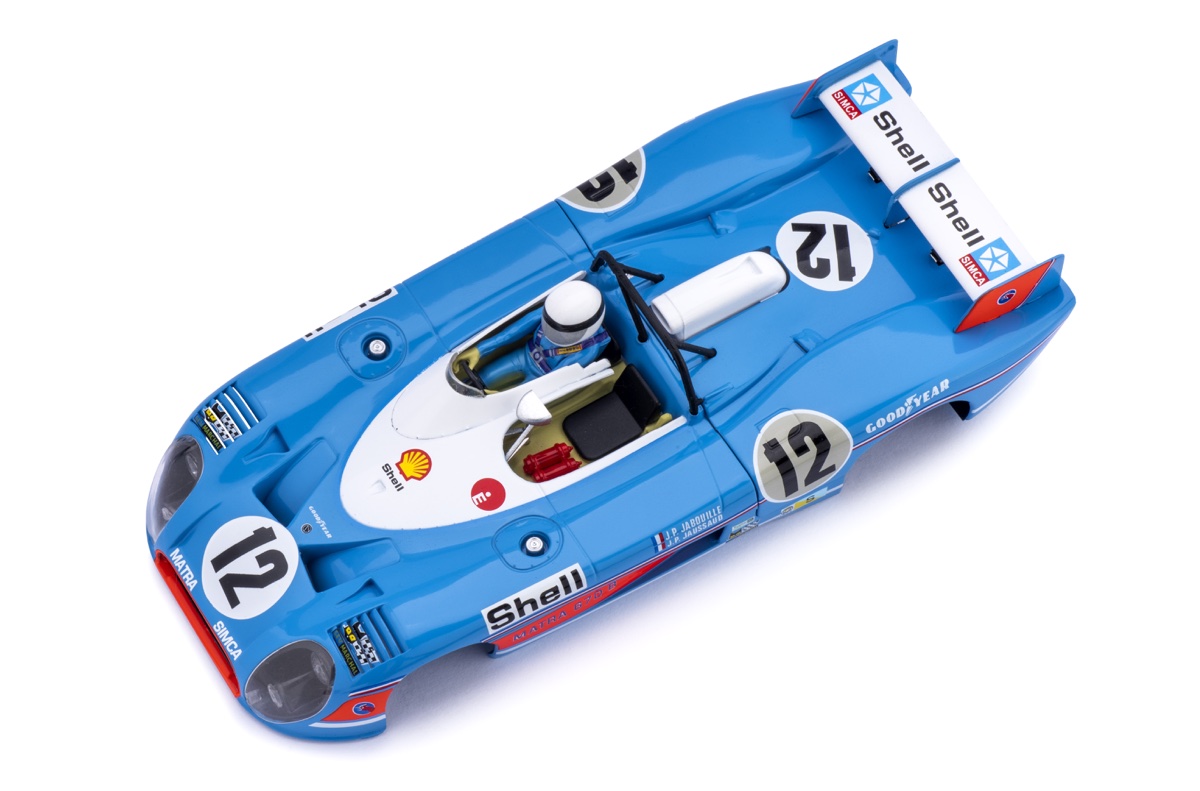
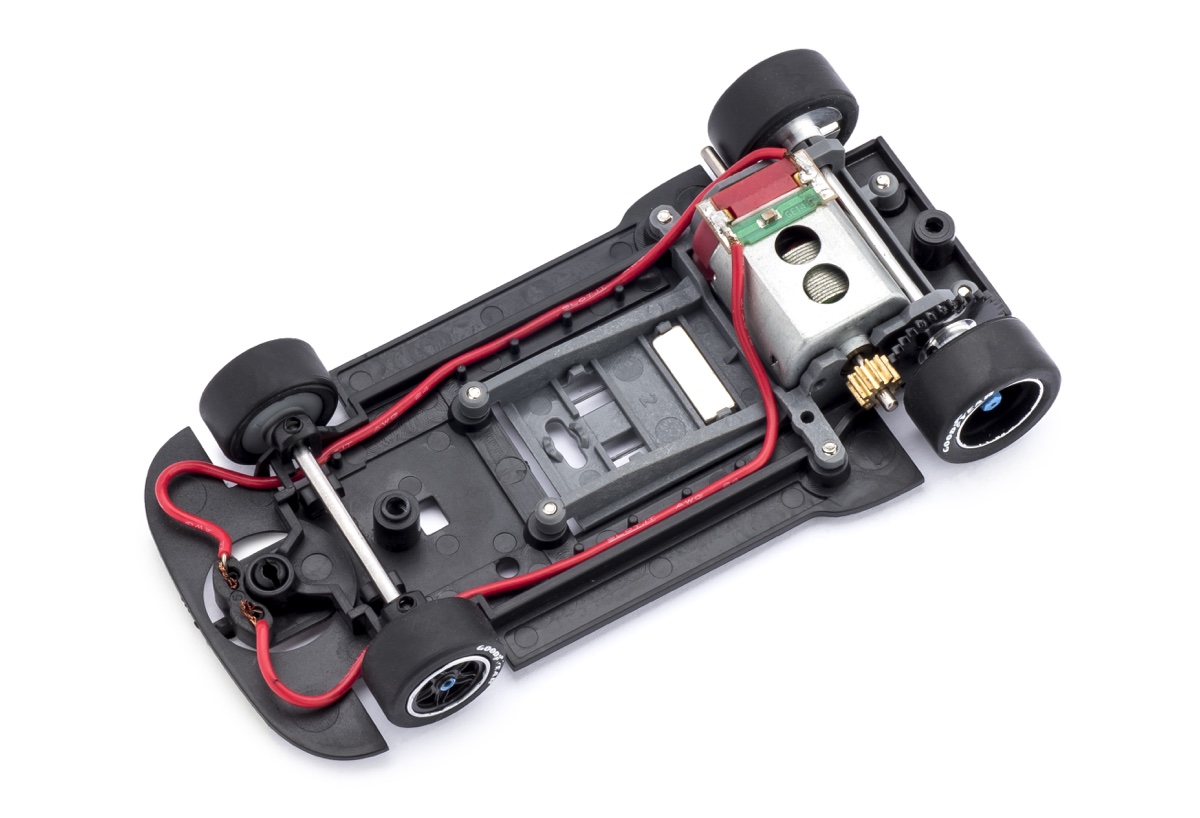
MATRA-SIMCA MS 670b
1974
MATRA-SIMCA MS 670b
1974 - Le Mans Winner / #7 - H. Pescarolo, G.Larrousse
CW18
A Le Mans, nel 1974, le ‘MS 670 B’ iscritte erano tre. Henri Pescarolo e Gérard Larrousse, con la vettura n.7, dominarono la corsa vincendo per il secondo anno consecutivo. The Matra-Simca MS 670 was a Prototype race car that won the Le Mans 24 Hours 3 times in a row (from 1972 to 1974) as well as the World Manufacturers Championship twice (1973 and 1974). The car was designed by Bernard Boyer and Jean-Louis Caussin. The long tail version, designed specifically for Le Mans, was still called ‘670 B’, ‘B’ being the distinctive letter of all Matras fitted with the Porsche 5-speeds gearbox. The chassis was an aluminium monocoque, with fibreglass body. The engine, whose sound was extremely loud, was a 60° 3-litres V12, with aluminium block and heads, 79.7 mm bore and 50.0 mm stroke. The motor version used in ‘74 at Le Mans was ‘MS 73’, with maximum torque of 320 Nm at 8400 RPM , and maximum power of 450 HP at 10500 rpm. On the Mulsanne straight the car could top 320 kph. Brakes had Girling ventilated discs, all-round; in 1974, the rear brakes were moved inboard. Rims dimensions were 13² x 11² at front and 15² x 15² at rear. The car weighted 693 kg. Three were the ‘670 B’s racing in Le Mans in 1974. Number 7 was driven by Henri Pescarolo and Gérard Larrousse who lead the race from start to finish, winning Le Mans for the third time in a row.
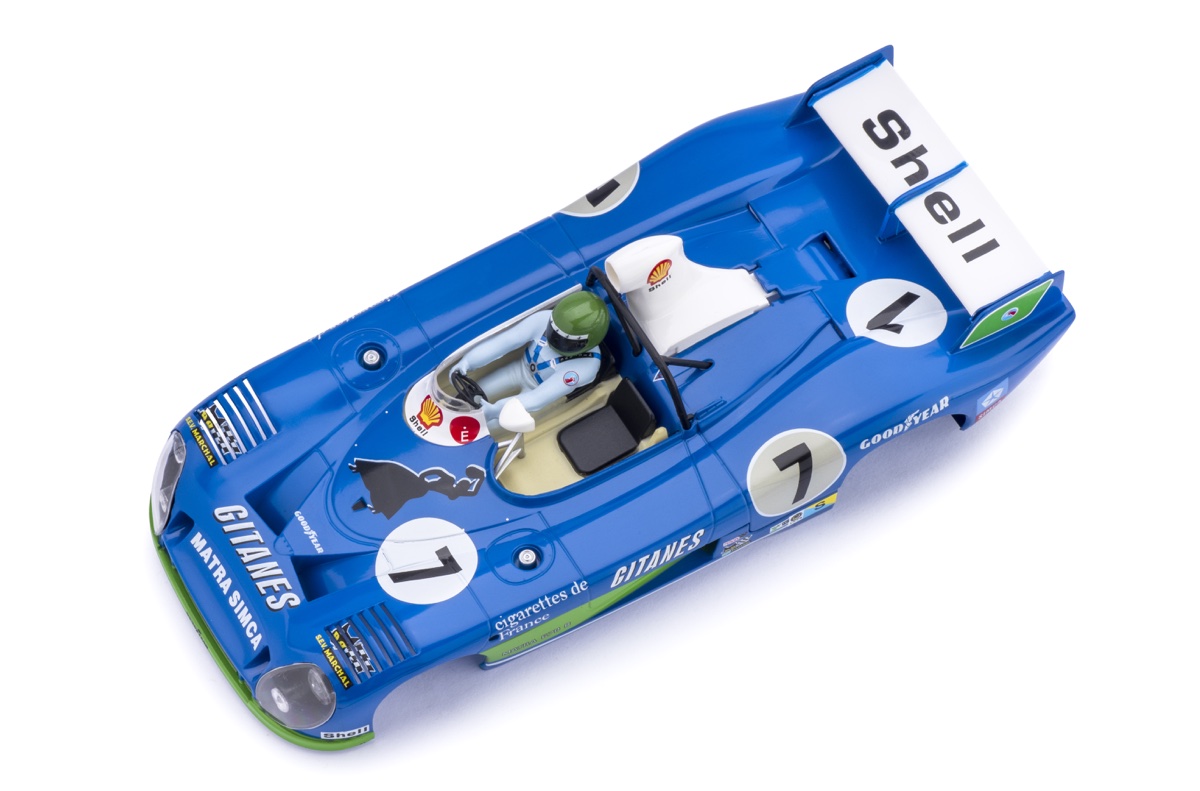
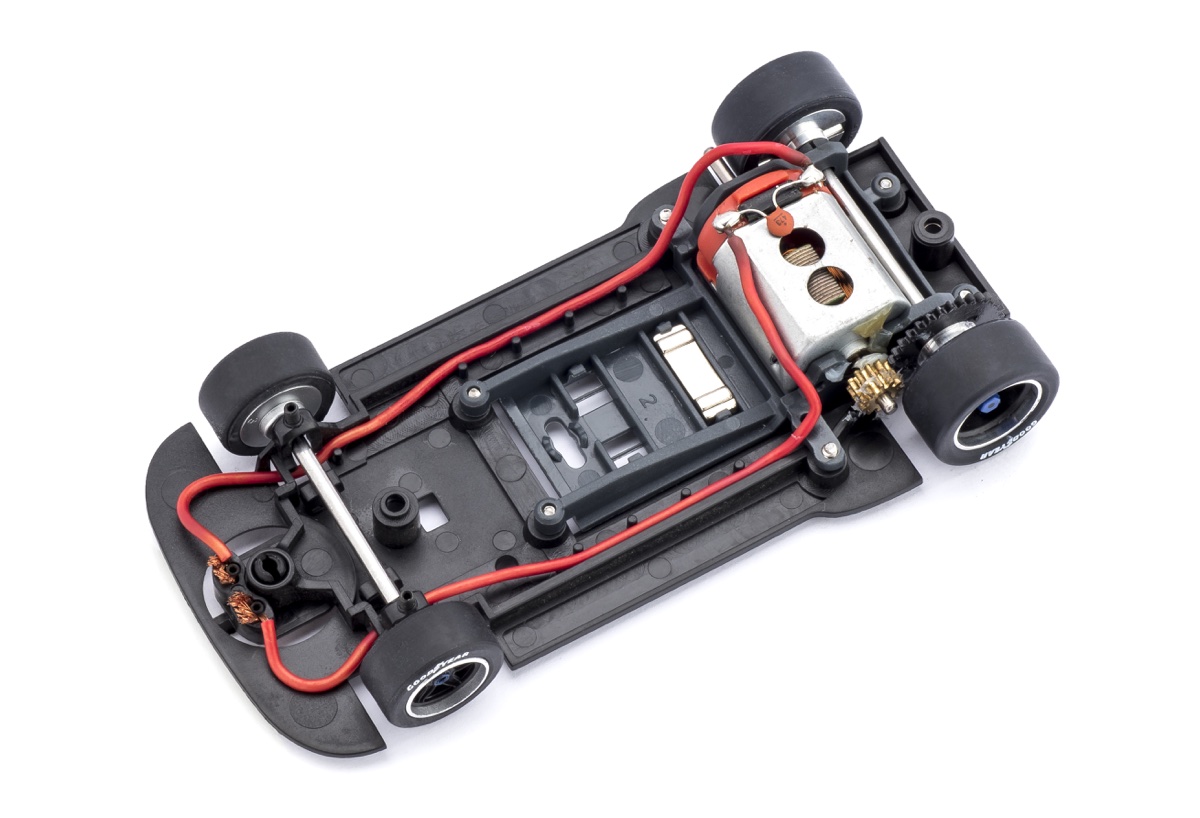
MATRA-SIMCA MS 670b
1973
MATRA-SIMCA MS 670b
1973 - Le Mans Winner / #11 - H. Pescarolo, G.Larrousse
CW21
The Matra vs. Ferrari showdown took place on the Circuit de la Sarthe, on June 9th and 10th, 1973, a day which also marked the 50th anniversary of the 24 Hours of Le Mans. The red Ferrari No. 16 driven by Merzario and Pace started from pole and run away in the distance, chased by the blue Matra of Beltoise and Cevert. When, after two hours, the italian leaders developed a fuel piping issue, the Matra No. 10 took their place on the leaderboard, only to be dangerously delayed, and later forced to retire, by tyre issues. At the end of a grueling race, the checquered flag was waved in front of the victorious Matra Simca 670B No.11 of Henry Pescarolo and Gérard Larrousse. The podium was completed by the surviving Ferrari 312 PB n.16 of Merzario and Pace, and finally Matra’s n.12 car of Jabouille and Jaussaud.
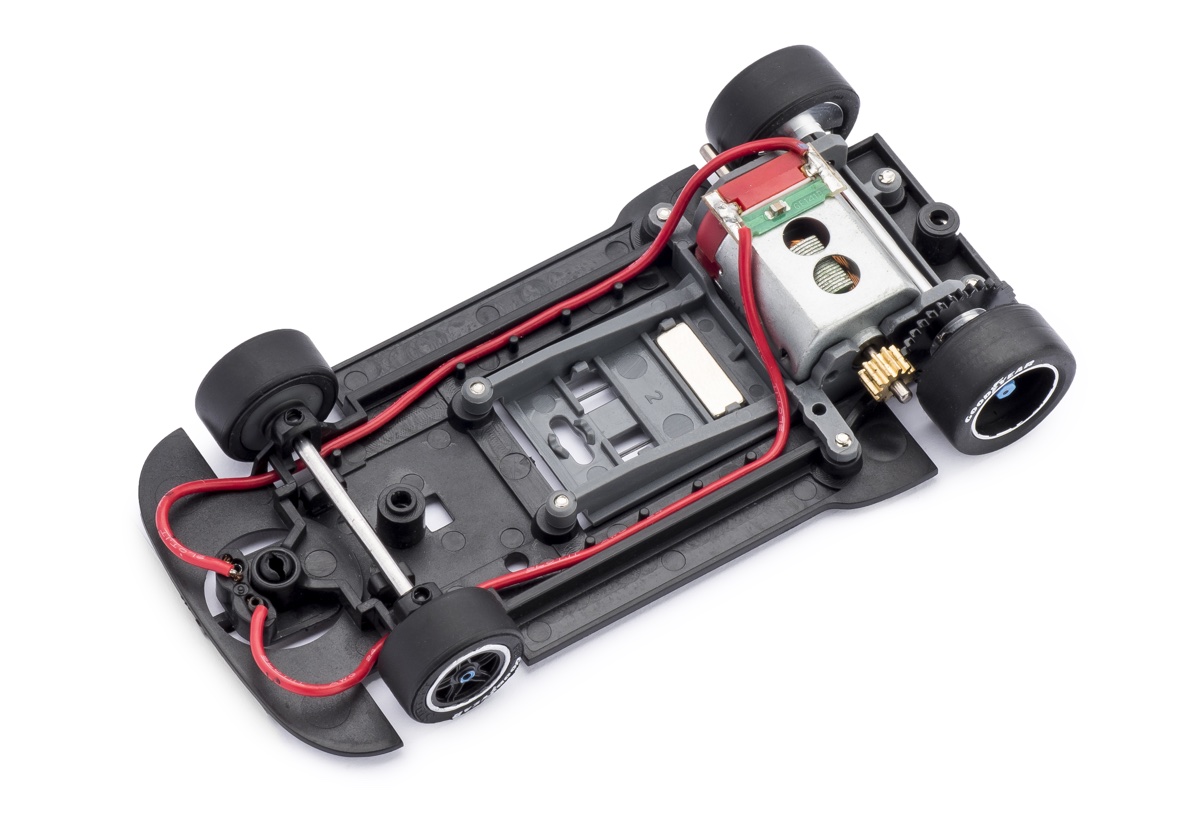
MCLAREN M8D
1970
MCLAREN M8D
1970 - 1st Can-Am Watkins Glen / #5 - Denny Hulme
CA26e
The M8D was a prototype race car, built in 1970 by McLaren Cars to compete in che Can-Am Challenge Cup. In comparison with the former ‘M8’, the M8D was wider and with a lower wing, which was also braced to the chassis, as the high mounted, suspension attached wings had been banned. Chassis was an aluminium sheet monocoque with steel bulkheads and stressed engine. Bodywork was in glass-fibre. The engine was a Chevrolet with Lucas fuel injection, prepared by George Bolthoff; it was a 7.6 litres V8 yielding 680 Hp of maximum power. The transmission was the 4 speeds Hewland LG500. The wheels had a 15 inches diameter, a width of 11 inches at front and 16 inches at rear. Tracks: front 1575 mm, rear 1486 mm. Wheelbase: 2387 mm. Width: 1930 mm. Length: 4166 mm.The overall weight was 634 kg. For the Australian Denny Hulme, Watkins Glen was the first of the many victories (more than half of the races) which led him to win the overall Can-Am 1970 championship.
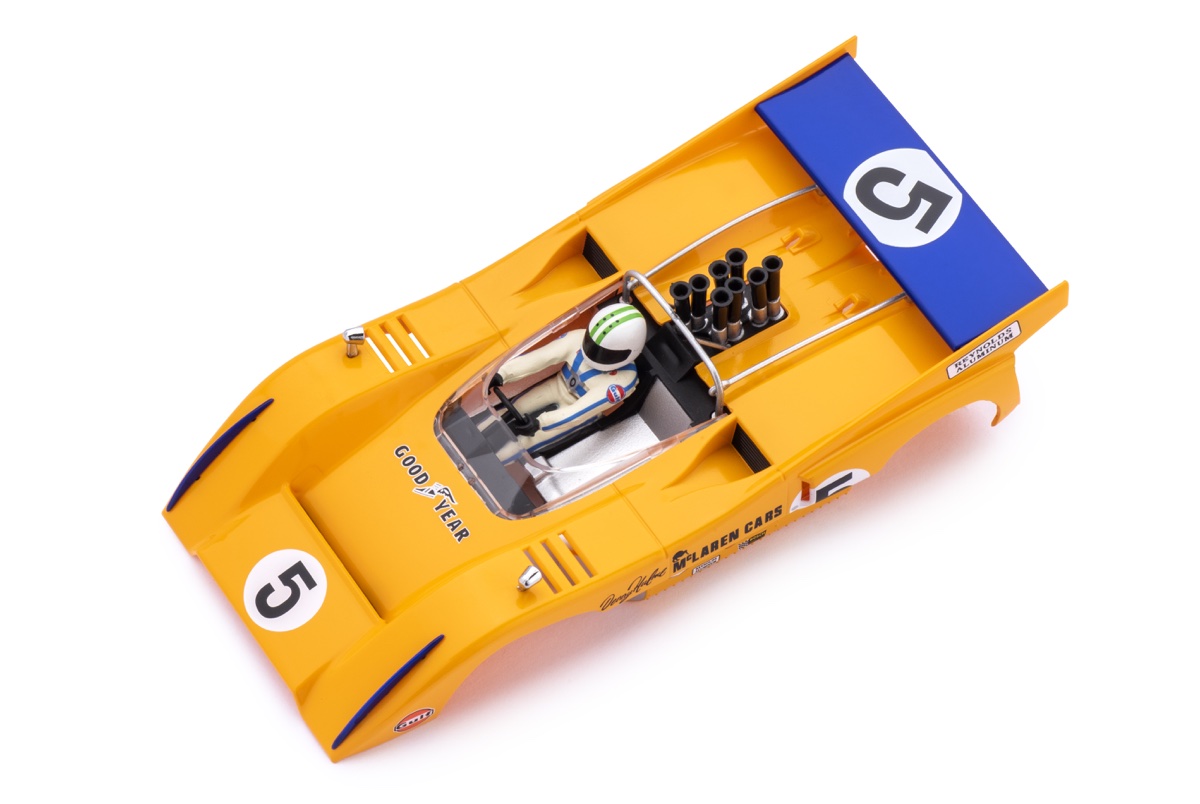
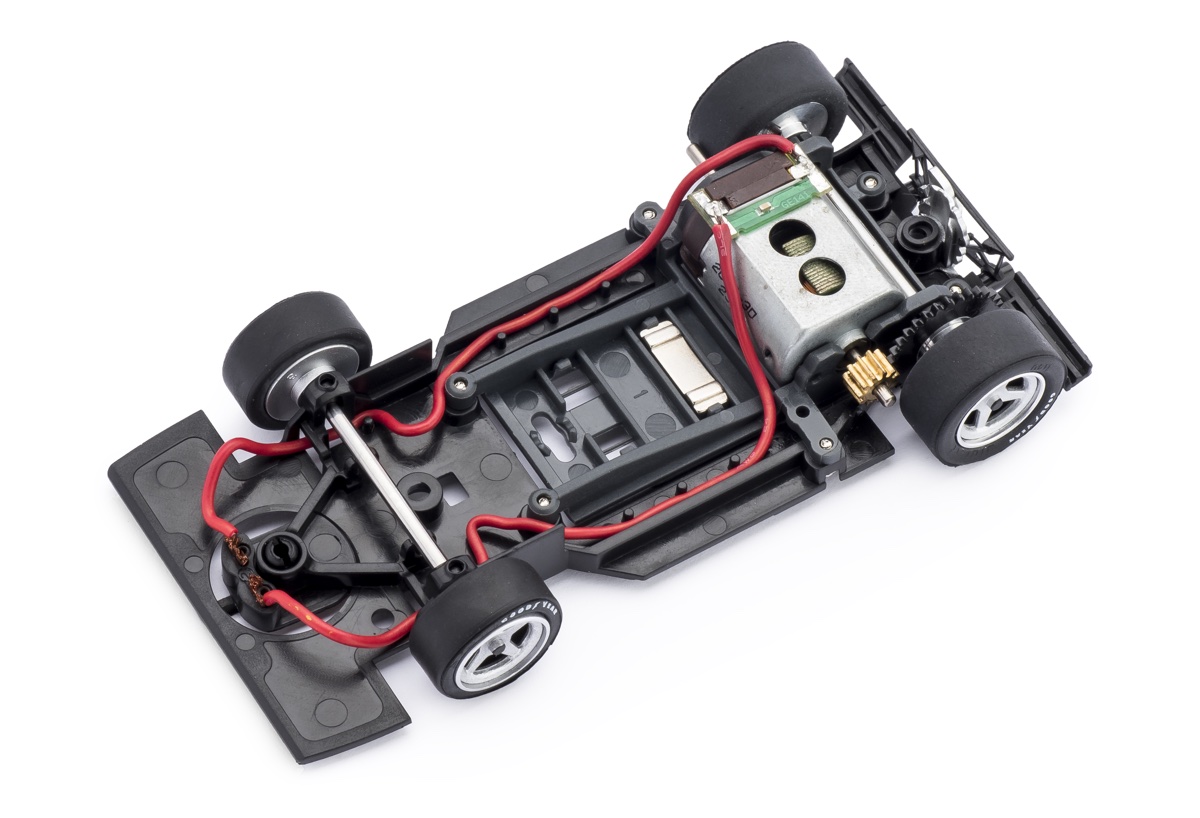
ALFA ROMEO 33/3
2011
ALFA ROMEO 33/3
2011 - Pocono #5 - J. Nastasi, A. Merzario
CA11m
The Alfa Romeo Tipo 33 Sport Prototype was designed in the mid 1960s to race in the World Sports Car Championship. Eventually it succeeded and won the Manufacturers’ Championship in 1975, and again in 1977.
Designed by Carlo Chiti, a famous Italian engineer, the several variants of the car were raced by the Alfa factory and by many privateers as well.
After the initial victories in the 2-litres Prototype category, the ‘T33/3’ version made its debut in 1969 and gained its best results in the 1971 World Championship: the Autodelta ‘open’ Prototypes won the overall ranking at Brands Hatch, Watkins Glen and the Targa Florio, being even faster than the 5-litres ‘Sport’ cars. The ‘T33/3’ cars featured a monocoque chassis, paneled in aluminium and magnesium, a V8 2998 cc engine, and a 6 or 5 speed gearbox. Top speed reached 330 km/h, at Le Mans with long tail. This specific model of the Alfa 33/3 reproduces the car owned by Alfa Romeo collector Joe Nastasi, as it was tested on the Pocono circuit. The same car is often seen at various historic car shows and races, such as the Targa Florio of 2014.
